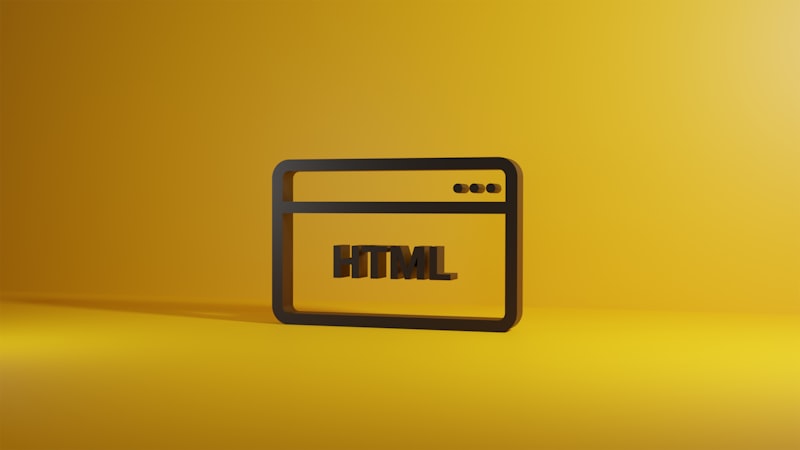Imagine a world where you can design a product on a computer and then watch it materialize in front of your eyes, layer by layer, as if by magic. That’s the essence of 3D printing, also known as additive manufacturing. Unlike traditional manufacturing methods that involve cutting away material (subtractive manufacturing), 3D printing builds objects layer by layer using materials such as plastic, metal, or even concrete, based on a digital model.
One of the most striking advantages of 3D printing is its ability to create highly complex shapes and structures that are difficult or impossible to achieve with traditional manufacturing techniques. This opens up a whole new realm of possibilities for designers and engineers, allowing them to unleash their creativity without the constraints of conventional manufacturing processes.
Moreover, 3D printing enables rapid prototyping. Instead of waiting weeks for a prototype to be made using traditional methods, designers can now print a prototype overnight and have it ready for testing the next morning. This accelerated pace of innovation is transforming industries ranging from aerospace to healthcare, where customization and quick iteration are crucial.
In addition to speed and complexity, 3D printing also offers sustainability benefits. By only using the material needed for the object being printed, there is significantly less waste compared to traditional manufacturing methods where excess material is often discarded. This reduction in waste not only lowers costs but also aligns with global efforts towards more sustainable practices.
Furthermore, 3D printing is democratizing manufacturing. Small businesses and startups now have access to affordable 3D printers that allow them to bring their ideas to life without needing a large-scale manufacturing facility. This leveling of the playing field is fostering innovation and entrepreneurship across the globe.
As 3D printing technology continues to advance, its impact on manufacturing will only grow stronger. From customized medical implants to lightweight aerospace components, the possibilities are truly limitless. The era of 3D printing is here, reshaping the way we create, build, and imagine the future.
Revolutionizing Production: How 3D Printing Is Reshaping Manufacturing

Imagine this: instead of traditional methods that involve cutting, drilling, and molding raw materials, 3D printing builds objects layer by layer. It’s like building a complex Lego structure from the ground up, where each piece fits perfectly into place, forming a cohesive whole.
This technology isn’t just limited to simple shapes either. From personalized prosthetics to aerospace components, 3D printing can produce highly detailed items with astonishing accuracy. It’s like having a magic wand that transforms digital designs into tangible objects with precision down to the micrometer.
One of the most significant advantages of 3D printing is its flexibility in design. Unlike mass production where molds dictate shape, here, designers have the freedom to experiment. Want a lighter, stronger part? No problem. Need intricate internal channels that would be impossible with traditional methods? 3D printing can handle it effortlessly.
Moreover, think about the sustainability aspect. Traditional manufacturing often results in wasted materials due to cutting and shaping processes. With 3D printing, material waste is minimized because it only uses what’s necessary for the object being printed. It’s like sculpting a statue out of a solid block of marble—except you’re only carving out what’s needed, leaving almost no scraps behind.
And let’s not forget the speed. While conventional manufacturing may take weeks or months to produce a prototype, 3D printing can churn one out in a matter of hours. It’s like having a fast-forward button for innovation, accelerating the development cycle and bringing products to market faster than ever before.
In essence, 3D printing isn’t just a technology; it’s a game-changer. It’s redefining how we think about production, pushing the boundaries of what’s possible, and opening new doors for creativity and efficiency. So the next time you hold a 3D-printed object in your hands, marvel at the fact that you’re witnessing the future of manufacturing right before your eyes.
From Concept to Creation: 3D Printing’s Role in Streamlining Manufacturing Processes
In essence, 3D printing, also known as additive manufacturing, works by building up layers of material to create a three-dimensional object. Unlike traditional manufacturing methods that often involve subtracting material through cutting or molding, 3D printing adds layer upon layer, like a sculptor crafting a masterpiece from a block of marble.
So, how does this technology streamline manufacturing? Let’s delve into the details. Firstly, imagine being able to prototype a new product within hours instead of weeks. With 3D printing, designers can rapidly iterate and test their ideas, tweaking designs on the fly until they get it just right. This agility not only accelerates the product development cycle but also slashes costs typically associated with traditional prototyping.
Moreover, 3D printing enables manufacturers to produce complex geometries that are challenging or impossible to achieve with traditional methods. Think about intricate lattice structures or parts with internal channels that optimize functionality and minimize material usage. This level of design freedom not only enhances product performance but also reduces waste—a win-win for both manufacturers and the environment.
Additionally, the flexibility of 3D printing extends beyond prototyping to actual production. Instead of maintaining extensive inventories of spare parts, manufacturers can simply print components on demand. This just-in-time manufacturing approach reduces storage costs and eliminates the risk of obsolete inventory, ensuring that companies can respond swiftly to market demands.
3D printing’s role in streamlining manufacturing processes is profound. By accelerating prototyping, enabling complex designs, and facilitating on-demand production, this technology is reshaping the way products are conceived, developed, and manufactured. As we embrace the era of additive manufacturing, one thing is clear: the future of making things is here, and it’s three-dimensional.
Breaking Barriers: The Economic Benefits of 3D Printing in Modern Industry
Imagine a factory where intricate parts and components are created layer by layer, with precision and speed that traditional methods could only dream of. That’s the power of 3D printing. By utilizing digital models to build physical objects, manufacturers can streamline prototyping, reduce material waste, and accelerate time-to-market. This efficiency translates directly into cost savings, making businesses more competitive in their respective markets.
But the benefits of 3D printing extend far beyond mere cost reduction. By enabling customization on a previously unimaginable scale, this technology empowers businesses to cater to niche markets and individual customer needs. Whether it’s a prosthetic limb tailored to fit perfectly or a complex architectural model brought to life, 3D printing allows for unparalleled design flexibility and personalization.

Moreover, the environmental impact of 3D printing cannot be overstated. Unlike traditional manufacturing processes that often generate significant waste, additive manufacturing uses only the materials necessary for the job. This not only reduces waste but also lowers energy consumption, making it a greener alternative for sustainable production practices.
In the realm of healthcare, 3D printing has already made groundbreaking strides. Medical professionals now have the ability to create patient-specific implants and surgical tools with unprecedented precision, improving outcomes and patient care. This intersection of technology and medicine highlights the transformative potential of 3D printing across various industries.
As this technology continues to evolve, so too will its economic impact. From aerospace and automotive industries to fashion and consumer goods, businesses are harnessing the power of 3D printing to innovate, differentiate, and thrive in an increasingly competitive global market. The era of additive manufacturing is here, breaking barriers and unlocking economic benefits that were once thought impossible.
Transforming Supply Chains: The Disruptive Power of 3D Printing Technology
3D printing, also known as additive manufacturing, is reshaping traditional manufacturing processes by creating objects layer by layer from digital designs. This technology allows companies to produce intricate parts and products directly from a computer file, bypassing the need for molds, tools, and lengthy assembly lines. But its impact extends far beyond convenience—it’s a game-changer for supply chains worldwide.
One of the most astonishing advantages of 3D printing is its ability to decentralize production. Instead of relying on a centralized factory producing goods that are shipped globally, 3D printers can be placed closer to the point of demand. Picture hospitals printing medical implants on-site or spare parts being manufactured locally for industries like automotive and aerospace. This localization reduces shipping costs, slashes lead times, and minimizes carbon footprints, all while enhancing supply chain resilience.
Moreover, 3D printing unlocks new levels of customization and innovation. Unlike traditional methods that mass-produce identical items, each 3D-printed object can be tailored to specific requirements with ease. This personalization not only satisfies niche market demands but also enables rapid prototyping and iteration, accelerating the pace of product development.
The environmental benefits are significant too. By producing items on-demand and closer to the consumer, 3D printing reduces excess inventory and the associated waste. It promotes sustainability by using materials more efficiently and can even utilize recycled plastics and metals in printing processes, contributing to a circular economy.
Frequently Asked Questions
What are the environmental implications of 3D printing in manufacturing?
Learn about the environmental implications of 3D printing in manufacturing, including its impacts on resource consumption, waste generation, and energy usage. Understand how additive manufacturing techniques can both reduce and contribute to environmental concerns compared to traditional manufacturing methods.
What industries are most impacted by 3D printing technology?
Discover which industries are significantly influenced by 3D printing technology, exploring its impact across manufacturing, healthcare, aerospace, automotive, and consumer goods sectors.
How does 3D printing reduce production costs in manufacturing?
Learn how 3D printing lowers manufacturing costs by minimizing material waste, streamlining prototyping, and enabling complex designs without expensive tooling.
Can 3D printing be used for mass production in manufacturing?
Learn whether 3D printing is viable for mass production in manufacturing. Understand the advantages, limitations, and industries where it can be effectively utilized.
What are the key benefits of 3D printing in manufacturing?
Discover the advantages of 3D printing in manufacturing, including rapid prototyping, cost-efficiency in small production runs, intricate design capabilities, and reduced material waste.


